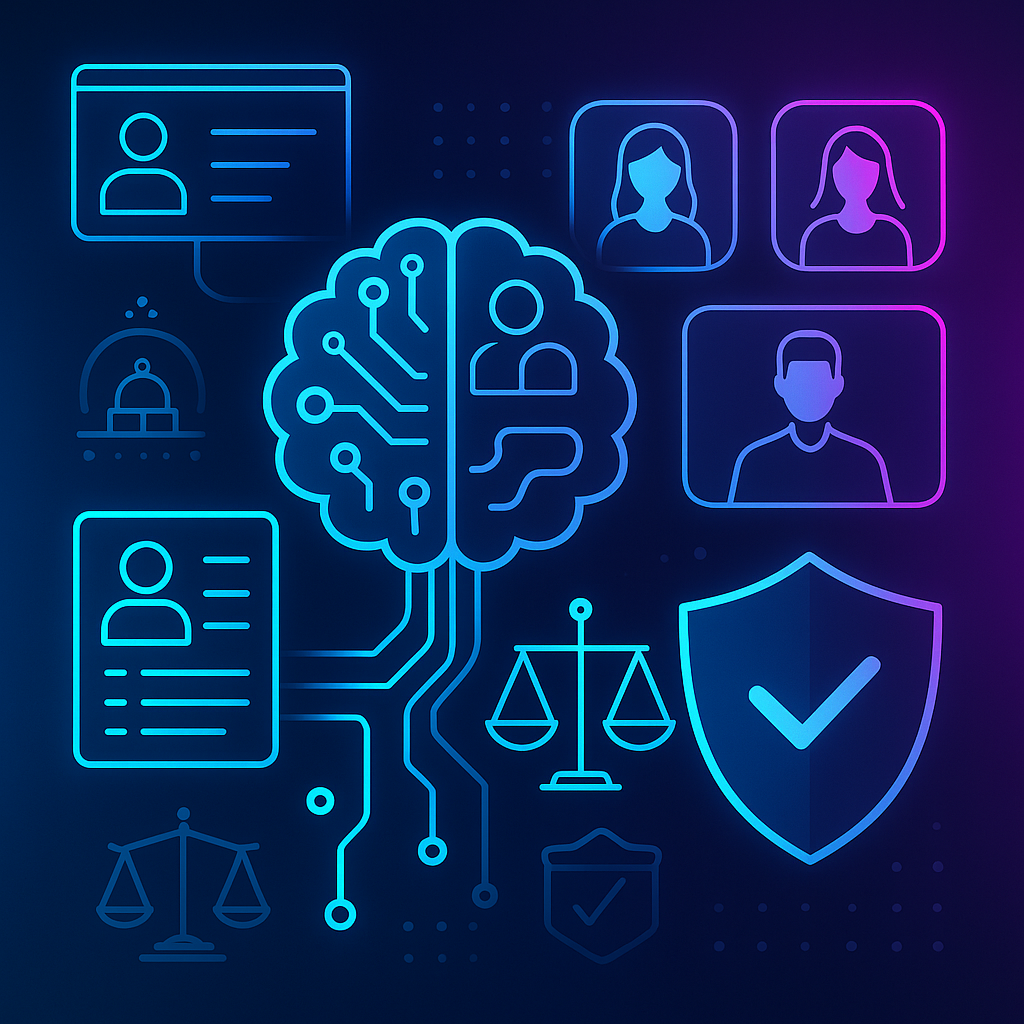Talent acquisition analytics: A guide to recruitment in large enterprises

Recruitment has been rapidly evolving over the years and in a bid to keep up with the ever increasing competition, large scale enterprises are quickly turning to talent acquisition analytics to enhance their hiring accuracy and efficiency. Talent acquisition data analytics have been helping organizations make better informed decisions, optimize recruitment processes, and ultimately improve their overall performance and competitiveness.
In this guide, we will explore the significance of talent acquisition analytics, discussing its benefits, key metrics, and strategies to successfully implement a data-driven recruitment approach. From predictive hiring to enhanced decision-making capabilities, talent acquisition insights are transforming how large enterprises attract and retain top talent, ensuring they stay ahead in a competitive market.
Benefits of using talent acquisition analytics
Talent acquisition analytics offer a myriad of benefits for large enterprises, fundamentally transforming their recruitment processes. Here are some of the key advantages:
Enhanced decision-making capabilities
Analytics provide insights into candidate suitability, predicting which candidates are most likely to succeed based on historical data and patterns. This data-driven approach reduces the reliance on intuition and subjective judgement, leading to better hiring outcomes. IBM has used data on recruitment, tenure, performance, role, salary, promotion history, and location to reduce their turnover rates in critical roles by 25% over four years.
Cost reduction
Implementing talent acquisition analytics can significantly reduce recruitment costs. By analyzing past hiring data, organizations can identify the most cost-effective sourcing channels and streamline their recruitment processes. This optimization not only cuts down on unnecessary expenses but also ensures that resources are allocated efficiently.
Improved hiring quality
Analytics help in assessing the quality of hires by tracking metrics such as employee performance, retention rates, and the overall success of new hires. By continuously monitoring these metrics, companies can refine their recruitment strategies to attract high-quality candidates who are likely to thrive and contribute to the organization’s success.
Best Buy found that a 0.1% increase in engagement results in over $100,000 in annual operating income per store. This finding led Best Buy to increase the regularity of their employee engagement surveys from annually to quarterly. (Reference link)
Faster hiring processes
Time-to-fill is a critical metric in recruitment, and talent acquisition analytics can drastically reduce the time it takes to fill open positions. By identifying bottlenecks and inefficiencies in the hiring process, analytics enable recruiters to expedite candidate selection and onboarding, ensuring that roles are filled promptly without compromising on quality.
Key metrics and KPIs in talent acquisition analytics
Several key metrics and Key Performance Indicators (KPIs) play a crucial role to help improve the talent acquisition process. These key metrics and KPIs provide valuable insights into the effectiveness of talent acquisition strategies and enable organizations to continuously improve their recruitment processes. Here’s an overview of some of the most relevant metrics:
Conversion rates of qualified candidates
Conversion rates of qualified candidates measure the percentage of candidates who progress through each stage of the recruitment process and ultimately accept a job offer. This metric provides insights into the effectiveness of sourcing channels, the quality of candidate engagement, and the overall efficiency of the hiring process.
A high conversion rate indicates that the recruitment process is attracting suitable candidates and effectively guiding them through the selection process, resulting in successful hires. Conversely, a low conversion rate may signify issues such as poor candidate experience, unclear job descriptions, or inefficient screening processes. Organizations can use this metric to identify areas for improvement and optimize their recruitment strategies to attract and retain top talent.
Cost per hire
Cost per hire is a fundamental metric that calculates the total cost incurred to fill a position. It includes expenses such as advertising, recruiter salaries, technology costs, and onboarding expenses. Calculating cost per hire is essential for measuring the efficiency and cost-effectiveness of the recruitment strategy.
A lower cost per hire indicates that the organization is able to fill positions more efficiently and allocate resources effectively. This metric allows organizations to identify trends, evaluate the impact of recruitment initiatives, and make data-driven decisions to optimize their hiring processes and reduce costs.
Employee retention rates
Employee retention rates measure the percentage of employees who remain with the organization over a specified period, typically one year. High retention rates indicate a healthy organizational culture, effective onboarding processes, and successful talent acquisition strategies. Measuring employee retention provides insights into the effectiveness of the hiring and onboarding process.
Organizations with high retention rates are more likely to have engaged and satisfied employees who contribute positively to the organization’s success. On the other hand, low retention rates may indicate issues such as poor job satisfaction, inadequate training and development opportunities, or ineffective leadership.
Time-to-fill positions
Time-to-fill measures the average duration it takes to fill open positions from the time they are approved to the time a candidate accepts the job offer. This metric provides insights into the efficiency of the recruitment process, including sourcing, screening, and interviewing candidates. A lengthy time-to-fill can result in increased costs, productivity losses, and potential delays in project execution.
By analyzing time-to-fill metrics, organizations can identify bottlenecks, streamline their recruitment processes, and expedite candidate selection and onboarding. This not only improves the overall efficiency of the recruitment process but also enables organizations to secure top talent more quickly, gaining a competitive advantage in the market.
Quality of hires
Quality of hires assesses the performance and long-term success of new employees within the organization. Metrics such as employee performance ratings, productivity levels, and tenure can be used to evaluate the quality of hires. Organizations with high-quality hires are more likely to achieve their strategic objectives, drive innovation, and maintain a competitive edge in the market.
Assessing the quality of hires helps organizations identify recruitment sources that yield high-performing employees and refine their selection criteria to attract candidates who are best aligned with the organization’s values, culture, and strategic objectives.
Key components of a data-driven talent acquisition strategy
A robust data-driven talent acquisition strategy encompasses several essential components that work together to optimize the recruitment process and ensure the acquisition of top talent. Let’s explore the key elements:
Data collection and analysis tools for talent acquisition
Effective data collection and analysis tools are the foundation of a data-driven talent acquisition strategy. These tools enable organizations to gather and analyze recruitment data from various sources, including applicant tracking systems, job boards, social media platforms, and employee referrals.
Organizations can gain valuable insights into candidate demographics, sourcing channels, recruitment trends, and performance metrics using data. This data-driven approach facilitates informed decision-making, enhances candidate engagement, and improves the overall effectiveness of the recruitment process.
Developing talent acquisition analytics framework
A well-defined talent acquisition analytics framework is essential for aligning recruitment efforts with organizational goals and objectives. This framework outlines the key metrics, KPIs, and performance indicators that will be tracked and analyzed to measure the effectiveness of talent acquisition initiatives.
Organizations can systematically evaluate the impact of their recruitment strategies, identify areas for improvement, and make data-driven decisions by establishing clear goals, defining success criteria, and implementing standardized reporting processes.
Leveraging predictive analytics in talent acquisition
Predictive analytics plays a crucial role in forecasting hiring needs, identifying high-potential candidates, and predicting future recruitment trends. It also allows organizations to anticipate talent gaps, proactively source candidates, and tailor their recruitment strategies to meet future demand.
Additionally, predictive analytics enable organizations to assess the likelihood of candidate success, identify potential risks, and make informed decisions about candidate selection and placement. This allows organizations to gain a competitive advantage in talent acquisition, streamline their recruitment processes, and ensure a steady pipeline of qualified candidates.
Integrating people analytics into the recruitment process
People analytics focuses on analyzing employee data to gain insights into workforce demographics, performance, engagement, and retention. Using people analytics into the recruitment process can allow organizations to gain a deeper understanding of candidate capabilities, preferences, and cultural fit. This enables recruiters to tailor their recruitment strategies to attract candidates who are best aligned with the organization’s values, culture, and strategic objectives.
People analytics also facilitates ongoing talent management efforts, including performance evaluations, career development initiatives, and succession planning. By leveraging people analytics, organizations can optimize their recruitment processes, enhance employee satisfaction, and drive long-term organizational success.
Continuous improvement and optimization
Organizations can identify areas for improvement, implement corrective actions, and optimize their recruitment processes over time. This iterative approach enables organizations to adapt to changing market conditions, emerging trends, and evolving candidate preferences, ensuring that they remain competitive in the talent marketplace.
A culture of continuous improvement and optimization facilitates organizations to maximize the effectiveness of their talent acquisition efforts, attract top talent, and drive business success.
Strategies for effective talent acquisition analytics
Implementing effective strategies for talent acquisition analytics is essential for optimizing the recruitment process and attracting top talent. Here are key strategies and their potential impact on the recruitment process:
Identifying and tracking talent pools
Organizations can proactively source candidates and build a pipeline of qualified talent by identifying and tracking talent pools. Techniques for monitoring the effectiveness of sourcing channels include tracking candidate engagement metrics, evaluating the conversion rates of qualified candidates, and conducting A/B testing to optimize recruitment campaigns. This strategy enhances sourcing efficiency, improves candidate quality, and reduces time-to-fill positions by ensuring a steady supply of qualified candidates.
Assessing candidate profiles and skill sets
Analytics can be used to evaluate candidate profiles and skill sets to ensure a good match with job requirements. Techniques such as skills analysis, profile matching, and competency analytics enable recruiters to identify candidates who possess the necessary qualifications and attributes to succeed in the role. This strategy improves hiring quality, reduces turnover rates, and enhances employee performance by selecting candidates who are best aligned with the organization’s needs and values.
Analyzing market trends and competitor intelligence
Continuous monitoring of industry trends, salary benchmarks, and competitor hiring practices can allow organizations to quickly adapt their recruitment strategies and continue to remain competitive in the talent marketplace. Market analysis enables organizations to identify emerging skill gaps, anticipate changes in candidate preferences, and adjust their talent acquisition initiatives accordingly.
Competitive intelligence helps organizations benchmark their recruitment efforts against industry peers, identify areas for improvement, and differentiate their employer brand to attract top talent. This strategy enhances recruitment effectiveness, strengthens employer branding initiatives, and positions organizations as industry leaders in talent acquisition.
Leveraging data insights to improve the recruitment process
Data insights from past recruitment cycles can inform and enhance current and future recruitment strategies. Insights such as candidate conversion rates, time-to-fill metrics, and candidate feedback provide valuable feedback for optimizing recruitment workflows, streamlining processes, and enhancing candidate experience. This strategy drives process improvement, enhances data-driven decision-making, and ensures continuous optimization of the recruitment process to attract and retain top talent effectively.
Utilizing candidate surveys to measure candidate experience
Candidate experience is a critical factor in attracting and retaining top talent. Utilizing candidate surveys to measure candidate experience provides actionable data to improve the recruitment process. Analyzing survey data enables organizations to identify trends, prioritize action items, and implement targeted interventions to improve candidate experience. This strategy fosters a positive employer brand reputation, enhances candidate engagement, and ensures that organizations are perceived as desirable employers in the talent marketplace.
Overcoming challenges in talent acquisition analytics
Implementing talent acquisition analytics comes with its own set of challenges. Addressing these challenges effectively is crucial for maximizing the benefits of data-driven recruitment. Here are common challenges and proposed solutions:
Ethical considerations in data usage and privacy
Handling candidate data raises ethical implications and privacy concerns. Organizations must adhere to privacy laws and ethical data usage practices to maintain candidate trust and compliance. Strategies include:
- Data ethics: Establish clear guidelines for ethical data usage, ensuring transparency, fairness, and accountability in handling candidate data.
- Privacy compliance: Comply with data protection regulations such as GDPR and CCPA by obtaining consent, safeguarding data, and implementing robust security measures.
- Ethical recruitment: Adopt ethical recruitment practices, including non-discriminatory hiring, informed consent, and data minimization, to protect candidate rights and promote fairness.
Ensuring data accuracy and validity
Data accuracy and validity are essential for reliable analytics and informed decision-making. Organizations need to ensure that the data used in recruitment analytics is accurate, reliable, and up-to-date.
- Data integrity: Implement data validation processes to detect and correct errors, inconsistencies, and inaccuracies in recruitment data.
- Accuracy in analytics: Use standardized data collection methods, validate data sources, and conduct regular audits to ensure the accuracy and reliability of analytics.
- Validation methods: Employ statistical techniques, cross-validation, and benchmarking to validate the accuracy and validity of recruitment analytics.
Dealing with resistance to data-driven decision making
Resistance to data-driven decision-making may arise due to organizational culture or fear of change. Overcoming resistance requires proactive strategies and effective communication. Approaches include:
- Change management: Implement change management initiatives to foster a culture of data-driven decision-making, emphasizing the benefits and opportunities of talent acquisition analytics.
- Organizational culture: Cultivate a culture of data literacy, collaboration, and innovation, encouraging stakeholders to embrace data-driven approaches and leverage analytics for strategic decision-making.
- Adoption strategies: Provide training, support, and incentives to encourage the adoption of talent acquisition analytics, empowering employees to use data effectively and confidently in recruitment processes.
Strategies for mitigating bias in data analysis
Bias in data analysis can lead to unfair and ineffective recruitment practices. Identifying and mitigating bias is essential for promoting diversity, equity, and inclusion in talent acquisition. Strategies include:
- Bias mitigation: Implement algorithms, models, and analytics tools that are designed to mitigate bias and promote fairness in recruitment decision-making.
- Fair analytics: Apply fairness metrics, bias detection algorithms, and fairness-aware machine learning techniques to identify and address bias in recruitment analytics.
- Unbiased recruitment: Conduct regular audits, reviews, and sensitivity analyses to assess the impact of bias on recruitment outcomes and take corrective actions to ensure unbiased recruitment practices.
In addition to the core functions of talent acquisition analytics, there are several other significant benefits that organizations can achieve through the strategic use of analytics in recruitment. Let’s delve into some of these additional capabilities and explore how they contribute to building a stronger and more competitive workforce.
Using predictive analytics to identify high-potential candidates
Predictive analytics utilizes historical data, candidate attributes, and performance indicators to identify patterns and trends that predict future outcomes. This allows organizations to develop predictive models to identify candidates with the highest potential for success.
One of the primary benefits of using predictive analytics in talent acquisition is the ability to streamline the recruitment process by focusing resources on candidates who are most likely to excel in the role. This not only saves time and resources but also increases the likelihood of making successful hires.
Leveraging analytics to enhance employer branding initiatives
Leveraging analytics can significantly enhance employer branding initiatives by providing valuable insights into candidate preferences, perceptions, and behaviors. This gives organizations a deeper understanding of their employer brand reputation and identify areas for improvement. For instance, analytics can reveal which aspects of the employer brand resonate most with candidates and which areas may need to be strengthened.
Incorporating talent analytics into succession planning
Succession planning is critical for ensuring leadership continuity and organizational stability. Talent analytics enables organizations to assess employee performance, potential, and readiness for leadership roles through data-driven insights. By analyzing factors such as past performance, leadership competencies, and career aspirations, organizations can identify employees with the potential to succeed in future leadership positions.
Meet Leoforce
Leoforce’s comprehensive talent sourcing and engagement capabilities, driven by sophisticated analytics, enable organizations to identify top talent quickly, improve candidate quality, and enhance the overall recruitment experience. Here’s how:
- Leoforce enhances candidate quality by up to 70% by leveraging seven multidimensional data points and hundreds of attributes to score and rank candidates, ensuring the identification of top talent.
- Leoforce’s analytics capabilities allow for seamless integration and consolidation of candidate data from multiple sources, providing recruiters with a comprehensive view of potential hires.
- With a 24×7 AI recruiting assistant and a centralized multi-channel communication dashboard, Leoforce improves candidate engagement by providing timely and personalized interactions.
- Leoforce helps decrease recruiting costs by up to 50% and boosts recruiter productivity by up to 80% through automation and efficient data utilization.
Talent acquisition analytics have become an indispensable tool for large enterprises looking to enhance their recruitment processes. From reducing costs and improving hiring quality to enhancing candidate engagement and streamlining processes, the benefits of talent acquisition analytics are extensive.
Incorporating advanced tools like Leoforce by Leoforce into the recruitment process further amplifies these benefits. Leoforce’s comprehensive analytics capabilities allow organizations to source, screen, analyze, rank, and engage with candidates more efficiently, ensuring that they attract and retain top talent in a competitive market.
Resources:
- https://www.aihr.com/blog/benefits-of-hr-analytics/





